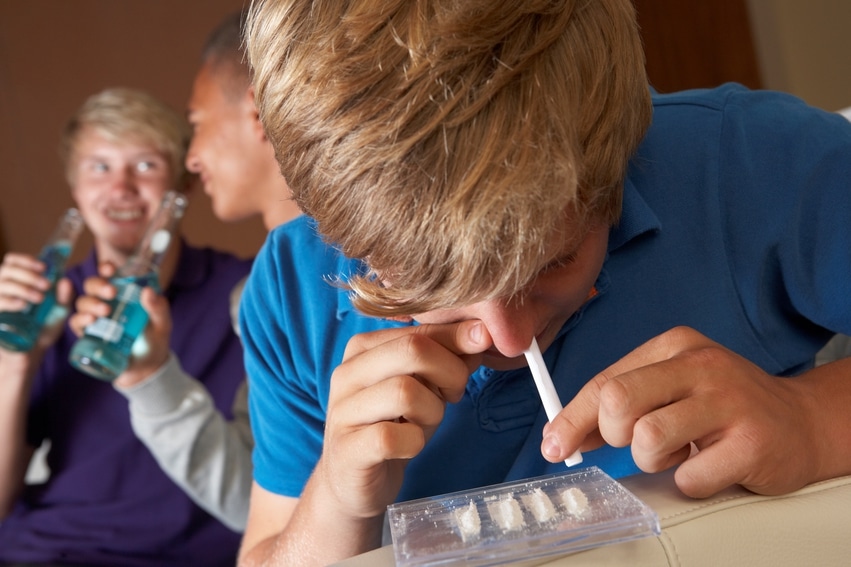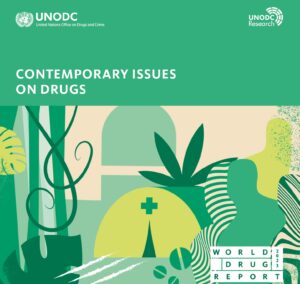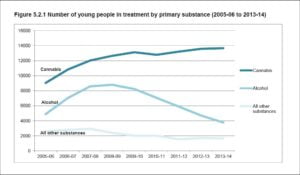Trends
The Office for Health Improvement & Disparities has just (2 February 2023) published the annual Young People’s Substance Misuse treatment statistics for 20221/22. There were 11,326 young people (people under the age of 18) in contact with alcohol and drug services between April 2021 and March 2022. This is a 3% increase from the previous year (11,013) but a 54% reduction in the number in treatment since 2008 to 2009 (24,494). The pandemic was likely to have had some impact in the year under consideration, but much less than the previous year with which it is compared.
Substances
Cannabis remains the most common substance (87%) that young people come to treatment for. Around half of young people in treatment (46%) said they had problems with alcohol, 8% had problems with ecstasy and 8% reported powder cocaine problems.
The proportion of young people seeking help for codeine is lower than last year, falling by 0.3% (1.2% compared to 0.9% this year). People seeking help for heroin was very similar to last year (0.35% compared to 0.33% this year).
This year also saw a small decrease in young people reporting a problem with benzodiazepines. However, the proportion (3%) was over 4 times the proportion in 2013 to 2014 (0.7%).
Who is in treatment?
There were 11,326 young people in structured treatment with drug and alcohol services between 1 April 2021 and 31 March 2022. Almost two-thirds were male (63%), a similar proportion to the previous 2 years. The median age was nearly 16 years old for girls and 16 years old for boys. The number of younger children (under 14) in treatment remained relatively low (969, 9%).
Referral routes
The most common route for young people to get into specialist treatment services was a referral from education services, with 32% of young people entering this way.
This is very similar to the proportion of education referrals in 2019 to 2020 (32%), but unsurprisingly much higher than the proportion in 2020 to 2021 (18%) when most schools were teaching remotely. Education referrals have not returned to pre-pandemic levels, with 2,569 education referrals in 2021 to 2022 compared to 3,196 in 2019 to 2020.
The second most common route for young people to get into specialist treatment services was a referral from social care, making up 23% of all referrals. This was the most common route in 2020 to 2021, when it made up 28% of referrals, but it was only the third most common route in 2019 to 2020 at 19%, after education (32%) and criminal justice (22%). Over this period, the number of social care referrals has been fairly stable, decreasing to 1,849 in 2021 to 2022 from 1,937 in 2019 to 2020.
The third most common referral route (18%) was via the criminal justice system.
Vulnerabilities
The most common vulnerability reported by young people starting treatment was early onset of substance use (80%), which means the young person started using substances before the age of 15. This was followed by polydrug use (55%).
Proportionally, girls tended to report more vulnerabilities than boys, particularly self-harming behaviour (46% compared with 17%) and sexual exploitation (10% compared with 1.5%).
Nearly half (46%) of young people starting treatment this year said they had a mental health treatment need, which continues the rising trend of the last 3 years (43% in 2020 to 2021, 37% in 2019 to 2020 and 32% in 2018 to 2019). A higher proportion of girls reported a mental health treatment need than boys (60% compared to 38%).
Most young people (69%) who had a mental health treatment need received some form of treatment, usually from a community mental health team.
Treatment exits
Of the young people who left treatment, 82% left because they successfully completed their treatment programme, which is slightly higher than the previous year’s proportion (79%). The next most common reason for leaving treatment (12%) was dropping out before they completed treatment, which is slightly lower than the previous year (15%).








